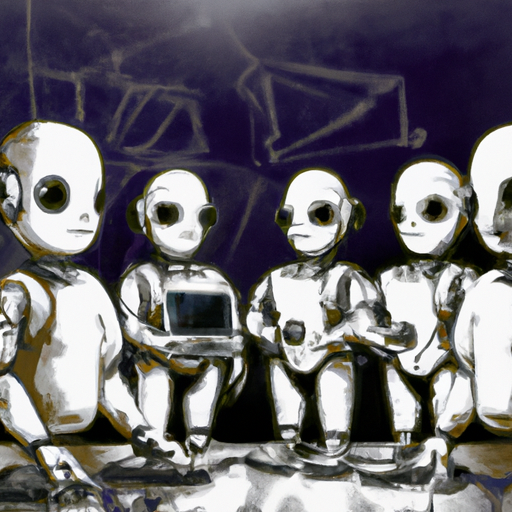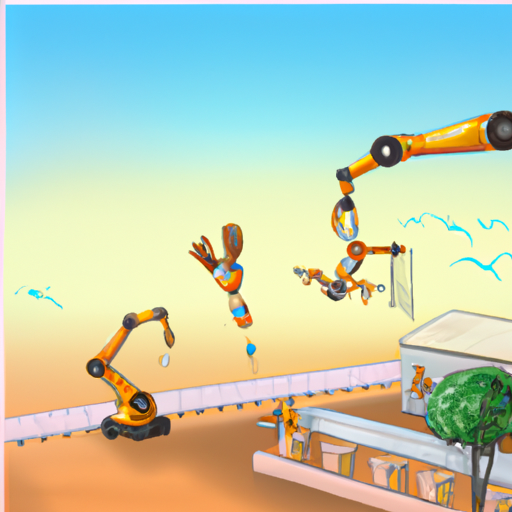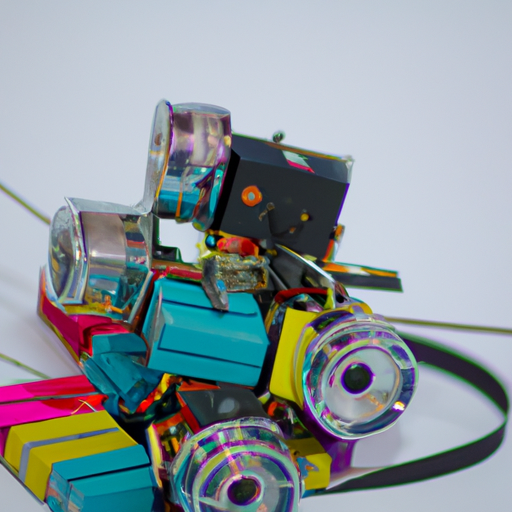-
Table of Contents
“Unlock the Future with the Development of New Types of Robots!”
Introduction
The development of new types of robots has been a rapidly growing field in recent years. From social robots that interact with humans to swarm robots that work together to complete tasks, the possibilities for robotic technology are seemingly endless. These new types of robots are being used in a variety of applications, from healthcare to manufacturing, and are revolutionizing the way we interact with machines. This article will explore the development of social robots and swarm robots, and discuss the potential applications of these technologies.
The Ethics of Developing Humanoid Robots
The development of humanoid robots has been a topic of much debate in recent years. On one hand, the potential benefits of such technology are immense, ranging from improved safety and efficiency in industrial settings to providing companionship and assistance to those in need. On the other hand, there are ethical considerations that must be taken into account when developing humanoid robots.
One of the primary ethical concerns surrounding the development of humanoid robots is the potential for them to be used for unethical purposes. For example, robots could be programmed to act in ways that are not in line with accepted moral standards, such as engaging in violence or other forms of exploitation. Additionally, robots could be used to manipulate or deceive people, or to carry out tasks that are not in the best interests of society.
Another ethical concern is the potential for robots to be used to replace human labor. While robots can be used to increase efficiency and reduce costs, they could also be used to replace human workers, leading to job losses and economic hardship. Additionally, robots could be used to exploit vulnerable populations, such as those in developing countries, by taking advantage of their lack of access to labor protections.
Finally, there is the potential for robots to be used to infringe upon the rights of individuals. For example, robots could be used to monitor people’s activities or to collect data without their knowledge or consent. Additionally, robots could be used to manipulate people’s behavior or to control their access to resources.
Given the potential ethical implications of developing humanoid robots, it is important that developers take these considerations into account when designing and programming them. Developers should ensure that robots are programmed to act in accordance with accepted moral standards and that they are not used to exploit or manipulate people. Additionally, developers should ensure that robots are not used to replace human labor or to infringe upon the rights of individuals. By taking these ethical considerations into account, developers can ensure that humanoid robots are used for beneficial purposes and that their development does not lead to any unintended consequences.
The Impact of Artificial Intelligence on Robot Development
The development of artificial intelligence (AI) has had a profound impact on the development of robots. AI is a branch of computer science that focuses on the development of intelligent machines that can think and act like humans. AI has enabled robots to become more autonomous and capable of performing complex tasks.
Robots are now able to learn from their environment and make decisions based on the data they receive. This is made possible by AI algorithms that allow robots to process data and make decisions based on the information they receive. AI algorithms also enable robots to recognize objects, navigate their environment, and interact with humans.
AI has also enabled robots to become more efficient and accurate in their tasks. AI algorithms allow robots to learn from their mistakes and improve their performance over time. This has enabled robots to become more reliable and accurate in their tasks, which has made them more useful in a variety of industries.
AI has also enabled robots to become more cost-effective. AI algorithms allow robots to complete tasks faster and more accurately than humans, which reduces the cost of labor and increases productivity. This has enabled businesses to reduce their costs and increase their profits.
In conclusion, the development of AI has had a significant impact on the development of robots. AI algorithms have enabled robots to become more autonomous, efficient, and accurate in their tasks. This has enabled robots to become more useful in a variety of industries and has enabled businesses to reduce their costs and increase their profits.
The Benefits of Swarm Robotics for Automation
Swarm robotics is a relatively new field of robotics that has the potential to revolutionize automation. It is based on the idea of using multiple robots to complete a task, rather than relying on a single robot to do the job. This approach has numerous advantages over traditional automation methods, making it an attractive option for many applications.
One of the primary benefits of swarm robotics is its scalability. By using multiple robots, tasks can be completed more quickly and efficiently than with a single robot. This is especially useful for large-scale tasks that require a lot of time and resources. Additionally, swarm robotics can be used to complete tasks that would be too complex for a single robot to handle. By dividing the task into smaller, more manageable pieces, the robots can work together to complete the task in a fraction of the time.
Another advantage of swarm robotics is its flexibility. By using multiple robots, tasks can be adapted to changing conditions or requirements. This is especially useful in dynamic environments where conditions can change quickly. Additionally, swarm robotics can be used to complete tasks that require a high degree of precision. By using multiple robots, the task can be completed with greater accuracy than with a single robot.
Finally, swarm robotics is cost-effective. By using multiple robots, the cost of automation can be significantly reduced. This is especially beneficial for businesses that need to automate tasks but have limited budgets. Additionally, swarm robotics can be used to automate tasks that would otherwise be too expensive to complete with a single robot.
Overall, swarm robotics offers numerous advantages over traditional automation methods. By using multiple robots, tasks can be completed more quickly and efficiently, with greater flexibility and accuracy. Additionally, swarm robotics is cost-effective, making it an attractive option for businesses that need to automate tasks but have limited budgets.
Exploring the Potential of Social Robots in Education
The potential of social robots in education is an exciting and rapidly growing field of research. As technology advances, social robots are becoming increasingly sophisticated and capable of providing a range of educational services. This article will explore the potential of social robots in education, including their potential to improve student engagement, provide personalized instruction, and facilitate collaboration.
Social robots are designed to interact with humans in a natural and intuitive way. They can be programmed to recognize and respond to human emotions, facial expressions, and body language. This allows them to provide personalized instruction and feedback to students. For example, a social robot could be programmed to recognize when a student is struggling with a concept and provide additional support or guidance.
Social robots can also be used to improve student engagement. By providing a more interactive and engaging learning environment, social robots can help to keep students engaged and motivated. For example, a social robot could be programmed to ask questions and provide feedback to students during a lesson. This could help to keep students focused and engaged in the learning process.
Finally, social robots can facilitate collaboration between students. By providing a platform for students to interact with each other, social robots can help to foster collaboration and problem-solving skills. For example, a social robot could be programmed to facilitate group discussions or provide feedback on group projects. This could help to encourage students to work together and develop their communication and collaboration skills.
In conclusion, social robots have the potential to revolutionize the way we teach and learn. By providing personalized instruction, improving student engagement, and facilitating collaboration, social robots can help to create a more engaging and effective learning environment. As technology continues to advance, the potential of social robots in education will only continue to grow.
Conclusion
The development of new types of robots, such as social robots and swarm robots, has the potential to revolutionize the way we interact with technology. These robots can be used to automate mundane tasks, provide companionship, and even help with search and rescue operations. As technology continues to advance, the possibilities for these robots are endless. With the right research and development, these robots could become an integral part of our lives in the near future.





